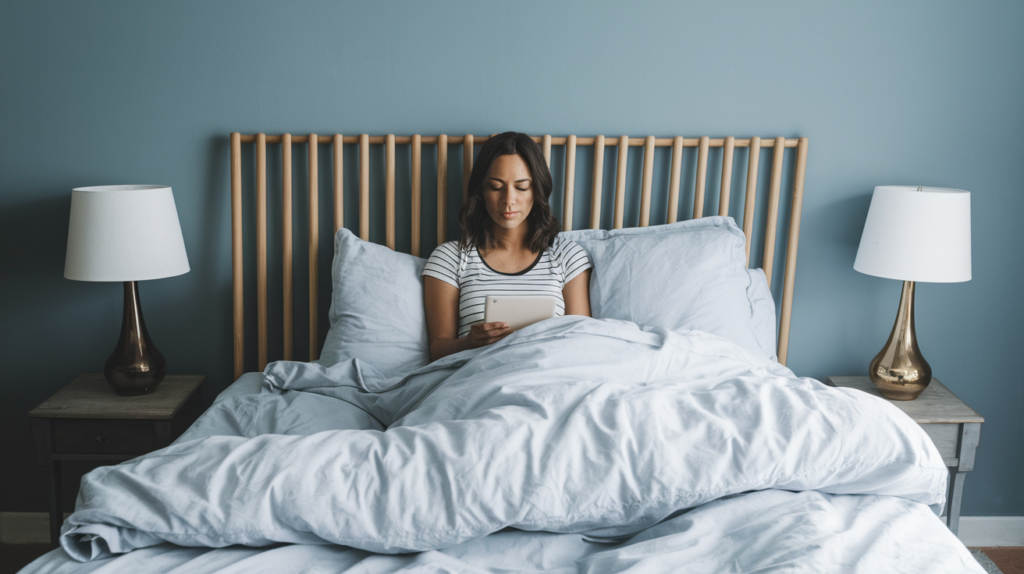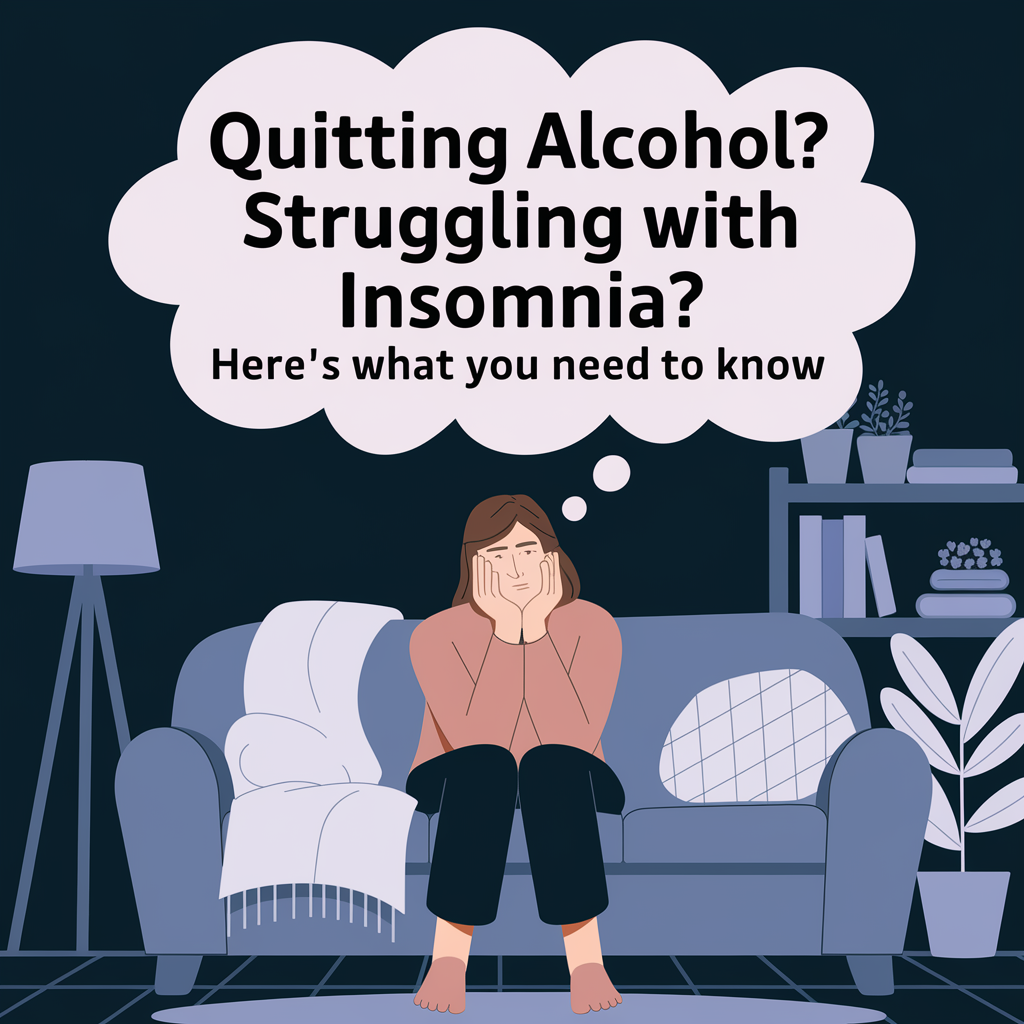
I didn’t know cold air could change my sleep—until I tried it
For years, I thought my sleep problems were just… me. I tried the melatonin, the routines, the white noise apps. Some nights I’d fall asleep fine, but I’d always wake up a few hours later—sweaty, uncomfortable, and wide awake. It felt like no matter what I did, I couldn’t stay asleep.
Then one night, out of frustration, I cranked the thermostat down and opened the window a crack. I wasn’t expecting much—but to my surprise, I actually slept through the night. Like really slept. No waking up hot, no tossing the covers off, no 3AM stare-offs with the ceiling fan.
That one night of sleeping in a cold room made me rethink everything I thought I knew about rest. And when I started making it a habit, my sleep got deeper, longer, and way more consistent. Turns out, the problem wasn’t in my brain—it was in my bedroom temperature.
If you’re struggling to sleep and you’ve tried everything but your room still feels stuffy or warm at night, this might be your fix. I’ll walk you through what I learned and how I made it work (without freezing my face off every night).

Why does sleeping in a cold room feel better?
At first, I thought it was just in my head. I mean, how could simply lowering the temperature make such a huge difference? But once I dug in, the science actually backed up what I was feeling.
Your body naturally cools down as part of the sleep process. It’s part of your circadian rhythm—your internal clock that tells your brain when it’s time to rest. When your bedroom is too warm, it interferes with that drop in body temperature, and your sleep suffers for it.
Here’s what happens when your room is too hot:
- You toss and turn trying to get comfortable
- Your REM sleep (the deep, restorative kind) gets cut short
- You sweat, wake up, and have a harder time falling back asleep
- Your body can’t fully relax, so you wake up feeling groggy
But when you’re sleeping in a cold room, your body gets to do what it’s built to do—cool down, slow down, and stay asleep longer. That’s why I started sleeping better. My body wasn’t fighting the environment anymore. It could finally rest.
And the best part? It didn’t take a full bedroom remodel or expensive tech. Just a few small changes made a huge difference. Coming up next, I’ll break down the exact science behind cold room sleep—and what temp range actually worked best for me.

The science behind cold sleep and deep rest
Once I realized sleeping in a cold room was helping me feel more rested, I wanted to understand why. And it turns out, there’s solid science backing it up. Our bodies are wired to sleep better in cooler environments—it’s built right into our biology.
When you go to sleep, your core body temperature naturally drops by about 1 to 2 degrees. This drop signals your body to release melatonin, the sleep hormone, which helps slow your heart rate, calm your nervous system, and get your brain into that deep, restorative sleep zone.

When your bedroom is too warm, here’s what can go wrong:
- Melatonin release is delayed
- Your body stays in a semi-alert state
- Sleep stages—especially deep sleep and REM—get disrupted
- You’re more likely to wake up throughout the night
In contrast, a cooler room helps trigger melatonin faster and supports your body’s effort to stay asleep through the night. It also helps reduce inflammation, promotes muscle recovery, and keeps your heart rate low—which all add up to better sleep and better mornings.
I didn’t need a lab to confirm it—just a few nights of cold sleep and I was waking up feeling like I’d finally gotten real rest. It was the kind of sleep that made me feel human again. Calm. Focused. Not dragging myself through the day like a zombie.
If you’re wondering, “Is it healthy to sleep in a cold bedroom?” the answer is yes—as long as you’re not freezing yourself silly. There’s a sweet spot, and we’ll talk about that next.

How cold is too cold? Finding the sweet spot
When I first started dialing down the temp at night, I wasn’t sure how low was too low. One night I set it to 60°F and woke up with my nose frozen. Another night I forgot to set it at all and felt like I was sleeping in a swamp. It took some experimenting to find my perfect range.
Most experts recommend a sleep temperature between 60°F and 67°F.
For me, the sweet spot ended up being about 64–65°F. Cool enough to keep my body relaxed, but not so cold that I needed five blankets and a hoodie.
Here’s what helped me dial it in:
- Programmable thermostat – I use this smart WiFi thermostat to drop the temp automatically at night and warm it up again in the morning. No more guessing.
- Fan for airflow – I also use a fan for circulation and steady background noise. This one made a huge difference for me.
- Layered bedding – I started using a lighter comforter with a soft throw nearby, so I can adjust without fully waking up.
Once I locked in that ideal sleep temperature, the difference was clear: sleeping in a cold room wasn’t just better—it became my new non-negotiable. I’ll never go back to warm, stuffy nights. And if you’re stuck in that cycle, don’t overlook your thermostat—it might be the biggest sleep tool you’re not using yet.

What I changed to make my bedroom colder
Getting the temperature just right wasn’t a huge renovation—it was actually super doable. Once I realized sleeping in a cold room was helping me stay asleep longer, I started making a few small upgrades to lock in that chill, cozy sleep vibe without making my bedroom feel like a meat locker.
Here’s what I changed:
1. Switched to a smart thermostat
This was the biggest upgrade. I finally stopped waking up too hot or freezing cold by installing a WiFi thermostat that automatically drops the temperature before bed and gently raises it just before I wake up. I’ve used the same one for 8+ years and it’s hands-down one of the best changes I’ve made to my sleep routine.
2. Started using blackout curtains
Sunlight creeping in through the windows early in the morning can heat up a room fast. I installed blackout curtains and noticed right away how they helped keep the room cooler—even in summer. Bonus: total darkness also helps with deeper sleep.
3. Added a powerful but quiet fan
I’m a light sleeper, and sound matters. But airflow matters more. This fan gives me both. It keeps the air moving and makes just enough white noise to drown out random creaks and noises without being annoying.
4. Tweaked my bedding
I used to pile on heavy blankets and then wake up sweaty. Now I go with a breathable comforter and an optional throw so I can adjust during the night if needed.
None of this was complicated. But together? These changes completely transformed my sleep. Sleeping in a cold room became a lifestyle shift—not just a temporary fix.

Is it okay to sleep in a cold room every night?
Absolutely—as long as you’re not freezing yourself out of comfort. There’s a big difference between sleeping in a cool room and shivering under a mountain of blankets because your house feels like an ice cave.
In my experience, maintaining a consistent temp (in that 60–67°F sweet spot) is actually healthier than constant fluctuations. Once I had it dialed in, I stopped waking up at 3AM feeling like I needed to adjust something.
Here’s why it works long-term:
- It supports natural sleep cycles without stressing your system
- Helps reduce night sweats or overheating
- Keeps your heart rate and blood pressure lower
- Encourages full, uninterrupted sleep cycles
Even in the winter, I keep my room cool. I just make sure I’ve got cozy bedding and maybe some warm socks on colder nights. It’s all about balance.
So yes—cold bedroom sleep is totally safe and seriously effective. It helped with my sleep quality, my mood in the morning, and even how quickly I fall asleep at night. And if you haven’t tried it yet, now might be the time. Just start with the thermostat and go from there.

Why cold sleep helped my insomnia
For the longest time, I thought my sleep issues were just part of life. I’d toss and turn, wake up randomly at 2AM, and sometimes lay there for over an hour, unable to get back to sleep. I tried cutting caffeine, sticking to a bedtime, even sleeping supplements—but nothing really fixed it long-term.
Then I started sleeping in a cold room.
I didn’t expect it to fix anything big. I just thought maybe I’d be a little more comfortable. But after a few weeks of consistently keeping the room cool, I noticed something huge: I was sleeping through the night. No more waking up every couple hours. No more staring at the ceiling wondering why my brain wouldn’t shut off.
How a cold room helped with my insomnia:
- It quieted my racing thoughts
- My body relaxed faster and stayed asleep longer
- I woke up feeling rested—not groggy or foggy
- I stopped dreading bedtime
And that anxiety I used to get as the sun went down? It faded. There’s something about climbing into a cool, quiet room that signals to your brain: it’s time to rest now. It creates a sleep environment that doesn’t require effort to maintain.
If you’re dealing with tossing and turning like I was, or waking up at odd hours like 3AM every night, your room’s temperature might be working against you. And trust me—it’s way easier to fix than you think.

My cold sleep checklist—what actually worked
If you want to start sleeping in a cold room, here’s exactly what I used to make it happen. It didn’t cost much, and I didn’t have to gut my bedroom or buy fancy gadgets.
My personal cold sleep checklist:
- Smart thermostat – I use this WiFi thermostat to schedule cool temps at night and warm-up times in the morning.
- Fan for circulation + white noise – This fan runs every night. Keeps air moving and creates a perfect sleep sound.
- Blackout curtains – These ones block early sunlight and help the room stay cooler.
- Breathable bedding – Lightweight comforter + optional throw blanket = flexible comfort.
- Open window trick (when the weather’s right) – I’ll crack the window in spring or fall to naturally cool the room before bed.
You don’t need all of these at once. Start with one or two. But I promise, when you get it right, your sleep will thank you. Because nothing feels better than waking up rested—especially when all it took was cooling down your room a few degrees.

Cold room, better sleep—simple as that
I’ve tried a lot of things to fix my sleep over the years. Some worked a little, some not at all. But honestly? Sleeping in a cold room was one of the most effective, low-effort changes I’ve ever made. It didn’t just help me fall asleep faster—it helped me stay asleep longer and wake up feeling like I actually got rest.
It’s wild how something as simple as bedroom temperature can affect everything from your mood to your focus to how many times you hit snooze. And the best part? It’s not complicated to fix.
If you’re ready to stop waking up sweaty, restless, or annoyed, here’s where I’d start:
- Use a smart thermostat like this one we still use today
- Add a fan that doubles as noise and airflow like the one that changed my nights
- Block early sunlight and drafts with these blackout curtains
- And layer your bedding so you can stay cozy without overheating
You don’t need to spend a fortune. You just need to give your body the cool, calm space it’s been asking for. Once you do, you’ll start to see exactly why sleeping in a cold room isn’t just a preference—it’s a serious sleep upgrade.
As an Amazon Associate we earn from qualifying purchases through some links in our articles.



